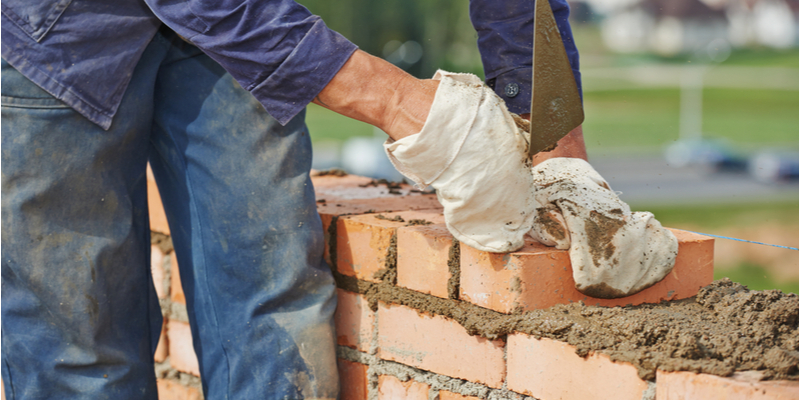Brick masonry is defined as the placement of bricks in a systematic manner using mortar to bind the bricks together and create a solid mass that can withstand a great deal of pressure. There are different types of bricks and mortars that are used to construct brick masonry. From the Egyptian Pyramids to the Great Wall of China, some of the most famous architectural masterpieces around the world have been constructed from brick masonry.
Over 6,000 years ago, sunbaked clay bricks were utilized to construct buildings. Way back when, masons added chopped straw and grass to the clay mixture to prevent distortion and cracking of the precise clay shapes. Around 4,000 BC, manufacturers began using uniform molds to shape bricks into precise shapes. In addition to shaping bricks, the transition from sunbaking to firing was another important shift in brick masonry that improved the durability of the popular building structure.
To this day, we continue to use brick as a popular building material. Although, since the earliest days, many changes have come about. The average modern-day brick is made of shale and clay and is fired in kilns at hot temperatures that reach around 2,000 degrees Fahrenheit.
Mortar is the joining force that bonds brick masonry and adheres bricks together. Mortar must be precisely mixed and placed in order to do its job properly and provide a strong and stable structure.
Different Types of Brick
Bricks come in many different colors and variations. The key is to use high quality bricks to get the best results. Although, not all brick masonry involves the typical bricks you envision – it can also involve terra-cotta, stone, concrete, blocks, and tiles. Most commonly, clay brick and concrete block are utilized by masons.
Some of the most common types of bricks include:
- Concrete bricks
- Common burnt clay bricks
- Sand lime bricks (Calcium silicate bricks)
- Fly ash clay bricks
- Engineering bricks
Other types of bricks include channel, cownose, hollow, coping, and bullnose bricks.
Different Types of Brick Masonry
Cement Brick Work
Cement brick work involves laying bricks in cement mortar. There are three classifications of brick work in cement, including:
First Class: Cement made of lime mortar is applied. Bricks have sharp edges and surfaces and the mortar joints do not exceed 10mm in thickness.
Second Class: Bricks with a rough and irregular shape are used and the thickness of mortar joints is 12 mm.
Third Class: Bricks are softer and have a rough surface with a distorted shape. Third class bricks are used for temporary structures and in regions without much rainfall.
Mud Brick Work
Instead of using a cement mortar, mud is used to fill in various joints in masonry work. Typically, the thickness of the mud mortar joints measures 12mm. This is the cheapest way to install brick masonry and is only used for walls that reach 4m tall.
The Highest Quality Brick Masonry
Not even the most high-tech machinery can replace the need for a high level of craftsmanship. There’s a great deal of skill involved when it comes to properly applying brick masonry work. Some of the most important factors include:
- High quality bricks that are well-made
- Properly matched mortar
- Horizontal brick courses
- When work ceases for a time, brick masonry should be left with toothed end.
- Brick bats should not be used.
- Brick masonry requires 2 weeks to properly cure.
- Mortar joints should measure 10 mm both vertically and horizontally.
At Turnbull Masonry, we know a thing or two about high-quality brickwork in Toronto. From rebuilds to historic restorations, our leading industry experts ensure a job done right. Contact us today to learn more.

